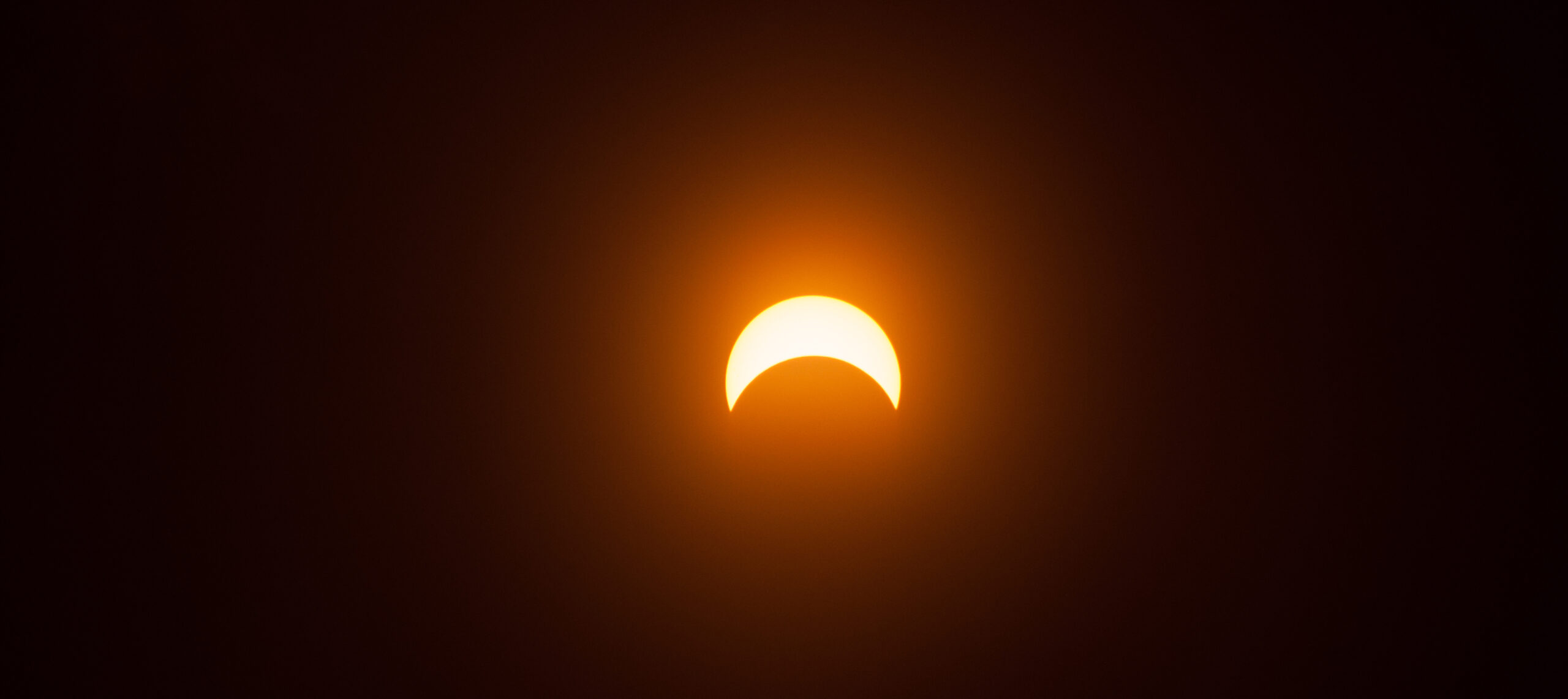
- This event has passed.
Annular Solar Eclipse


Weather Update: As we monitor changing weather patterns, it seems likely that poor weather conditions will impact our viewing. Don’t worry! We will continue with a modified viewing event with a Live Feed from NASA in the Planetarium and Studio 3!
Saturday, October 14
7:30AM – 11AM
All ages, family friendly.
This fall, here in the Bay Area, we will have one of our last chances to experience a solar eclipse in our own back yard until 2024! Chabot Space & Science Center will be open early to ensure guests have the best chance to spot the annular solar eclipse from our Observation Deck or to watch a live feed inside of the museum. Special guest speakers, activities and science demonstrations will take place during the event and after the eclipse ends.
Tickets will include general admission to the Center after the event programs end at 11:00 AM.
Eclipse Livestream from NASA
7:30AM – 9:30AM
Planetarium
Eclipse Livestream from NASA
7:30AM – 11AM
Studio 3
Eclipse QSO’s with Martin Rothfield
7:30AM – 11AM
Courtyard
Interactive Community Built Eclipse Exhibit
7:30AM – 2PM
Studio 3
Come share your experience with us and leave your mark on Chabot through an interactive art exhibit about this year’s Annular Solar Eclipse.
October’s Annular Eclipse with Gerald McKeegan
8:00AM – 8:30AM
Theatre
On the morning of October 14, 2023, the Moon will pass between the Earth and the Sun, producing a “Ring of Fire” annular solar eclipse. From the Bay Area, this will appear as a partial eclipse, with 77% of the Sun’s diameter blocked by the Moon. What is an annular eclipse and why does this happen? How is an “annular” eclipse different from a “total” eclipse? Join as we journey towards finding the answers to these questions with a presentation by Gerald McKeegan!
Peak Eclipse Viewing Time
9:15am – 10:15am
Observation Deck / Front Circle depending on weather / Livestream
Weather-permitting: guests will have a chance to view the Eclipse through sunspotters, welder’s glass viewers, their solar glasses, a solar telescope, and through a solar lens on Leah.
Ben Burress: Moon Shadows: The Solar Eclipses of 2023 and 2024
10:15AM – 11:00AM
Planetarium
Solar eclipses are not as rare as you might think, but you have to be in the right place at the right time to see one. For the October 2023 and April 2024 eclipses, North America is the right place. Across the United States, no matter where people live, at least some of the Sun will be blocked by the Moon—and for a lucky few the spectacle of totality will be breathtaking. We will show you both of these eclipses from different angles to help visualize what is taking place in this alignment of Sun, Moon and Earth.
There Goes the Sun: Solar Eclipse Demos!
11AM, 12PM, 2PM
Classroom 1
What is a solar eclipse, and why are they so rare? What can we learn about light and our nearest star by observing eclipses? Join Chabot Educators as we demonstrate how the alignments of the Sun, Earth, and Moon can cause an eclipse, and learn how to safely view eclipses, including the upcoming annular solar eclipse on October 14, 2023.
Tales of The Maya Skies
11:30AM
Planetarium
(35min) Through the magic of technology and imagination, you are about to take a trip across time and space to visit a world as it no longer exists today: the world of the ancient Maya civilization! The great pyramid and other stone observatories and structures in the ruins of Chichen Itza in Mexico’s Yucatan peninsula have been laser-scanned and recreated digitally to enable your journey. You will see Chichen Itza perhaps as it looked a thousand years ago when the Maya civilization of the ancient world was at its peak. You will also learn about Maya culture’s advanced understanding of space, time, and mathematics that allowed them to understand the world as few ancient cultures have.
Sunstruck
1:00PM
Planetarium
(21min) Explore the sun in all its glory in this full-dome show. Sunstruck takes us on a journey to discover the wonders of our magnificent sun and investigate how our star has supported life on Earth for millennia. This program includes information on the structure of our sun, the source of its energy, and how solar activity impacts our world.





